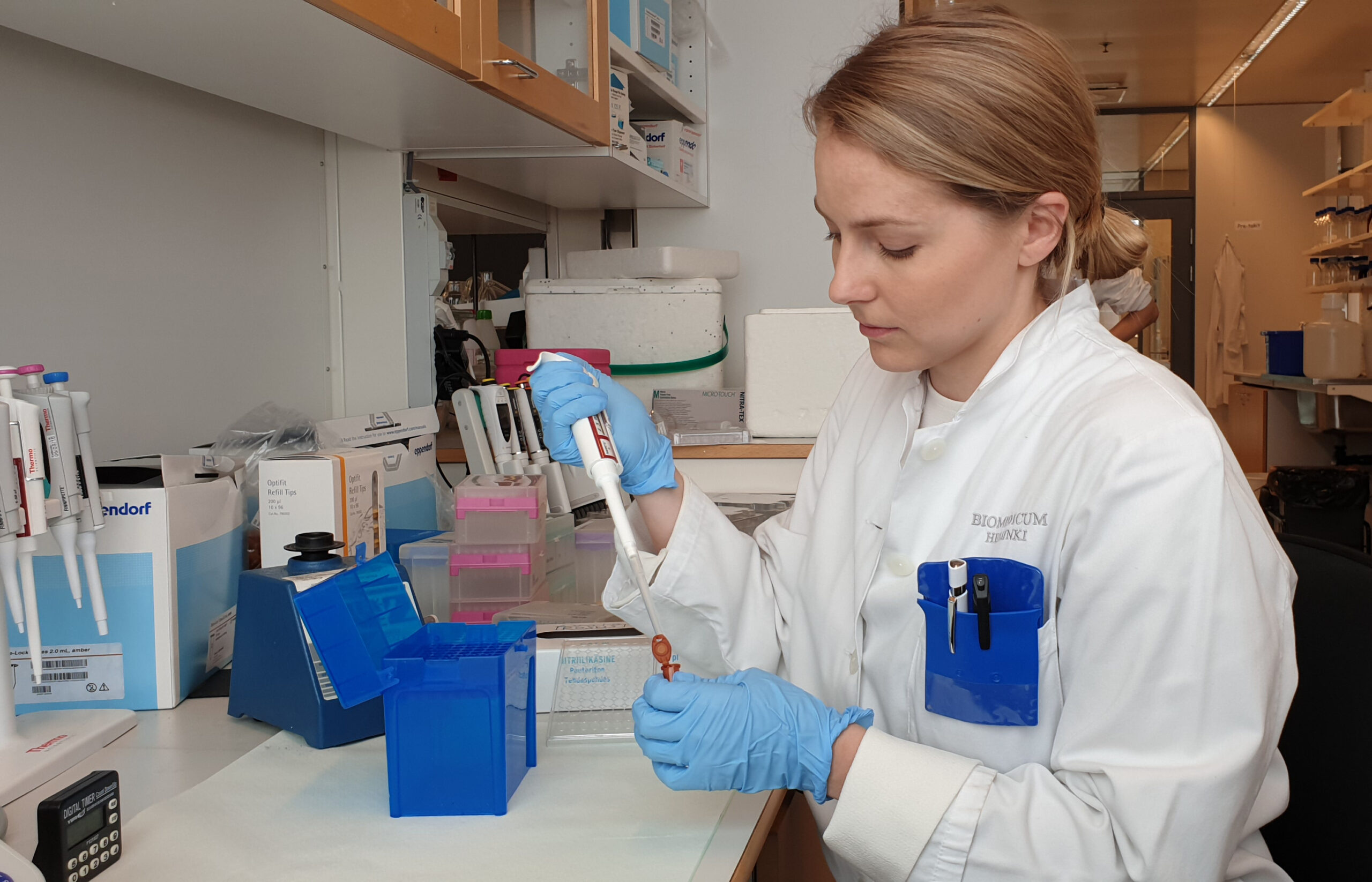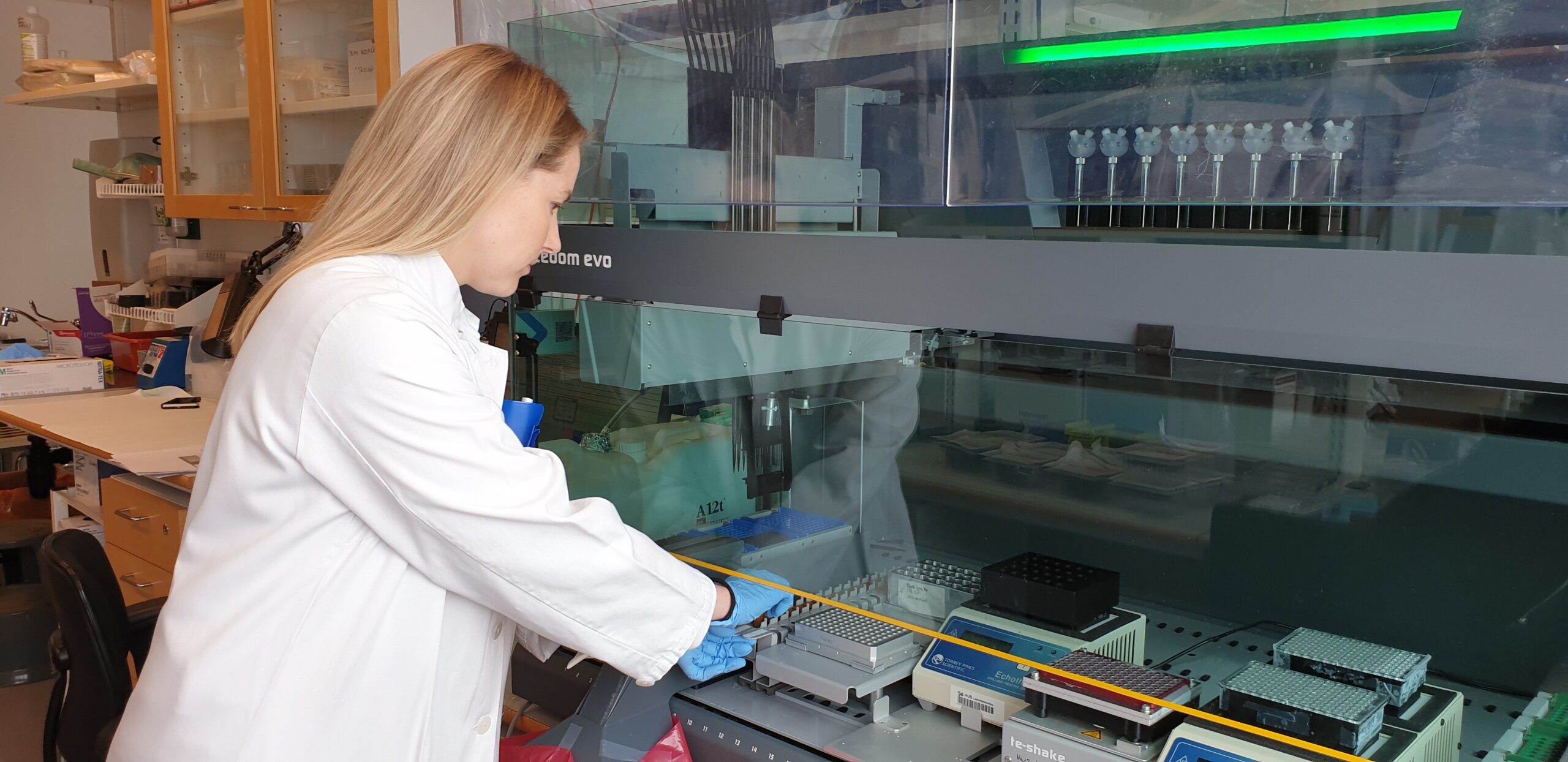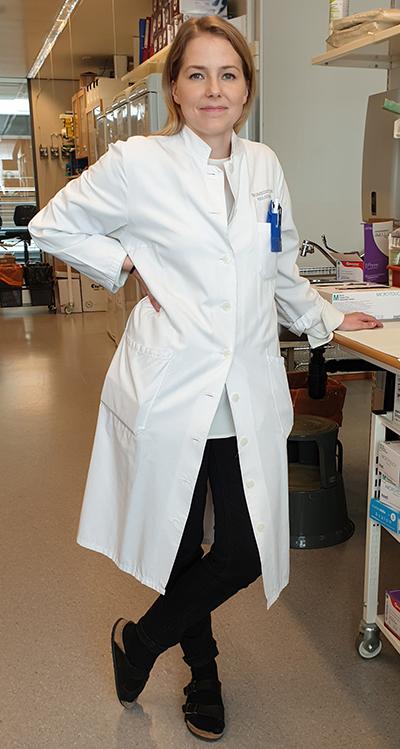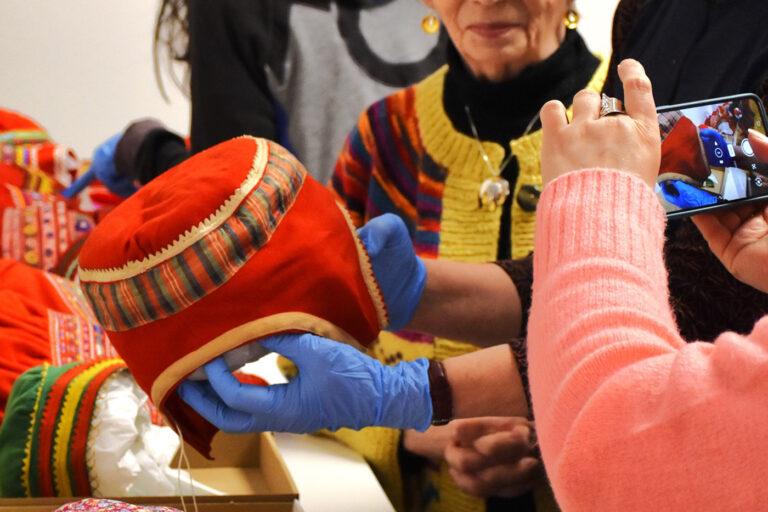Screening for Drugs that Have Adverse Interaction Effects
Helinä Kahma is looking for drugs that have adverse effects when used together following a less common and lesser-known mechanism. At the same time, she is working to solve practical issues related to the use of a drug-screening robot.


When a person takes medicine, it stays in the body for a while having an effect, until it is eliminated. From the body’s point of view, medicine is a foreign substance that must be expelled.
Medicines, i.e. drugs, are often eliminated from the body using CYP enzymes, which are mostly produced in the liver. The CYP enzymes break down the drug into a water-soluble form, which makes it easy to excrete in urine.
When drugs are “antagonistic”, i.e. their combined effect is adverse, it is often due to the fact that one of the drugs acts as an “inhibitor”, competing for the same CYP enzyme with another drug, the “victim drug”. In such cases, the victim drug cannot be excreted normally from the organism and when the drug is taken, its concentration can rise uncontrollably and unpredictably.
When the inhibitor is removed from the organism, the CYP enzymes are usually immediately freed up and start to work on the excretion of the victim drug, according to normal procedure.
There has been a lot of research on drug interactions, and these days drug manufacturers make it known if a product is a CYP inhibitor and must be used with caution in combination with other drugs. Certain pharmaceutical products with particularly dangerous interactive effects have also been removed from the market altogether.
– Some drugs destroy CYP enzymes entirely. This means that the victim drug cannot be eliminated until the liver has had time to produce enough new enzyme. That may take a long time, explains Helinä Kahma, Pharmacist and PhD candidate in Clinical Pharmacology.
This is known as mechanism-based inhibition (MBI). It is a less common, more troublesome CYP interaction, which has been researched less than more common forms of CYP inhibition.
In her PhD work, Kahma is developing a method for easily screening drugs causing MBI.
– These days pharmaceutical developers do take MBI into account, but there are still many drugs on the market that have not been thoroughly examined from this perspective.
Kahma is conducting her research at Biomedicum 1 in Meilahti, Helsinki. There she has access to a drug-screening robot. It can quickly process microplates, which are plates consisting of various “wells” in which various substances can be examined.
The wells are filled with a cocktail of “goo” isolated from the liver and victim drugs requiring diverse CYP enzymes. Then different drugs are added to each well to find out whether it affects the interaction between the victim drug and the CYP enzyme. If it does, it may be a potential inhibitor.
The biggest challenge in the project has been fine-tuning various details of the robotic process.
“A robot is not always as swift to adapt to timed pipetting series as human hands.”
Another challenge is the consistency of biological samples.
–The solution at the bottom of the wells needs to be stirred occasionally. With water-based solutions this is not usually a problem, but stirring makes the liver isolate foamy, Kahma explains.
Kahma is screening dozens of drugs using microplates as part of her PhD project, but the plan is to extend the research to hundreds of new drugs afterwards.
During her PhD project, Kahma intends to make the process as efficient as possible. This is why enough time must be spent on solving issues like the foaming.
If and when potential inhibitors are found, the findings will be verified using clinical trials on healthy volunteers.
– Results obtained using microplates won’t tell us if the findings are clinically significant.
Kahma (*1985) went on from school to study Pharmacy at the University of Helsinki, because she was interested in science and medicine but did not want to become a doctor. Her diploma work in Pharmacy was related to drug interactions, and she also completed her Master’s thesis on the subject for the pharmaceutical company Orion. That was when she heard about the Department of Clinical Pharmacology in Meilahti and applied to carry out PhD research on MBIs there in 2015.
She is getting towards the end of her research, but she is likely to continue working in Meilahti on drug interactions and the microplate robot after that.
Text: Antti Kivimäki
Pics: Anna Bui
Helinä Kahma received a EUR 24 000 in 2019 for her doctoral thesis about drugs that have adverse effects when used together following a less common and lesser-known mechanism.



